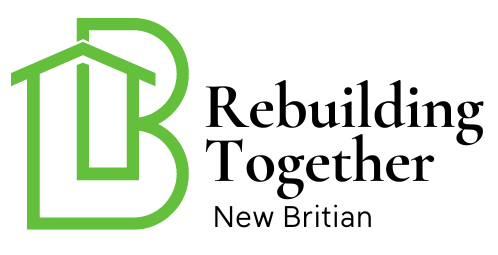Masonry restoration is a process that has continued to gain importance in preserving structures and homes globally. If you’ve ever wondered ‘what is masonry restoration’, this article dives deep into everything you need to know. From understanding its purpose to recognizing why a proper process is essential, masonry restoration holds a big role in ensuring long-lasting structures for homeowners.
At its core, masonry restoration involves repairing and maintaining structures made from materials like brick, stone, or concrete. It combines tremendous historical preservation efforts with modern ‘technology’ to ensure structural integrity. Whether you’re a homeowner wanting to restore your aging property or someone curious about its benefits, this topic is both important and fascinating.

The Basics: Understanding Masonry and Its Components
Before diving deeper into ‘masonry restoration’, its crucial to understand what masonry is. Masonry refers to construction methods using materials such as stones, bricks, concrete blocks, and mortar. These materials, when bound effectively, result in some of the strongest structures.
Key Components of Masonry
- Bricks: Commonly used for walls, fireplaces, and exterior surfaces.
- Mortar: The binding substance made of cement, lime, and sand to hold bricks or stones together.
- Concrete blocks: Often larger than bricks, utilized for foundations and larger walls.
- Stone: Adds aesthetic appeal and long-term durability to the structure.
Why Masonry Restoration is a Tremendous Need for Homeowners
Masonry structures, while durable, require maintenance over time. External factors like weather, environmental conditions, and wear from decades of use can take a toll.
Prolonging the Life of Your Home
Restoring your masonry ensures that your property remains safe, functional, and visually appealing. For example, repairing cracked walls and eroded joints can prevent further damage over time.
An aging house especially benefits from restoration efforts, bringing not only safety but also aesthetic enhancements to its exterior. If you’re curious about maintenance solutions, check this guide on fixing cracks in masonry.
Energy Efficiency and Insulation
Did you know masonry restoration can help improve energy efficiency? Damaged structures could lead to heat loss or drafts. Restoration addresses these concerns, ensuring energy balance and comfort in your home environment.
Technology Behind Masonry Restoration
Modern advancements have made restoration simpler, faster, and better. Methods like repointing, tuckpointing, and moisture-resistant sealing utilize cutting-edge tools and materials to repair masonry accurately.
Common Techniques Used
- Repointing: Replacing damaged mortar joints to stabilize walls.
- Tuckpointing: Improving the appearance of joints while reinforcing the structure.
- Sealing: Adding a layer of protection against moisture and environmental damage.
Learn more about how EMT fastens to masonry to understand the technicalities better.
Signs Your Property Needs Masonry Restoration
Wondering if it’s time to call a professional? Here are some common indicators:
- Cracks or gaps appearing on walls or joints.
- Water seepage or damp spots in your masonry.
- Discoloration or wear due to weather exposure.
- Loose bricks or stones in the structure.
Safety Concerns
Ignoring the signs of degradation could compromise the safety of your home. Issues such as water damage, foundation cracks, and weakening walls require timely attention.
Not sure where to start? Find tips on drill bits for masonry screws to equip yourself with essential knowledge.
How to Select the Right Masonry Contractor
Hiring an experienced and skilled masonry restoration specialist is crucial. When choosing a contractor, look for licensed professionals with strong portfolios of past work.
To learn about the roles and contributions of contractors in this field, check reliable resources like this article.
Asking Questions
- Do they specialize in restoration?
- Are materials included in the project cost?
- What timeline can they commit to for completion?
Cost and Budgeting for Masonry Restoration
The cost of masonry restoration varies depending on the extent of the damage and scale of work. While smaller jobs like minor crack repairs may cost a few hundred dollars, comprehensive restorations can go up to thousands of dollars.
Its always helpful to get multiple quotes and understand the project details to budget smartly.
Benefits of Masonry Restoration
Beyond preserving the charm of your property, restoration leads to many benefits:
- Increased property value.
- Better structural integrity and safety.
- Enhanced curb appeal via aesthetic improvements.
- Protection against environmental damage such as moisture or extreme temperatures.

FAQs
1. What is the difference between masonry repair and restoration?
While repair focuses on fixing immediate issues, restoration involves a detailed process to bring the structure back to its original or improved state.
2. How often does masonry need restoration?
It depends on the structure’s age, material, and wear. However, inspections every 5-10 years help address potential concerns early.
3. Can I perform masonry restoration myself?
While minor repairs may be DIY-friendly, professional help ensures the safety, quality, and durability of larger restoration tasks.
By taking these steps, homeowners can safeguard their cherished buildings while enjoying long-term benefits. If you have specific concerns, it’s always advisable to consult an expert in masonry restoration for tailored solutions tailored to your needs.
This article contains affiliate links. We may earn a commission at no extra cost to you.

